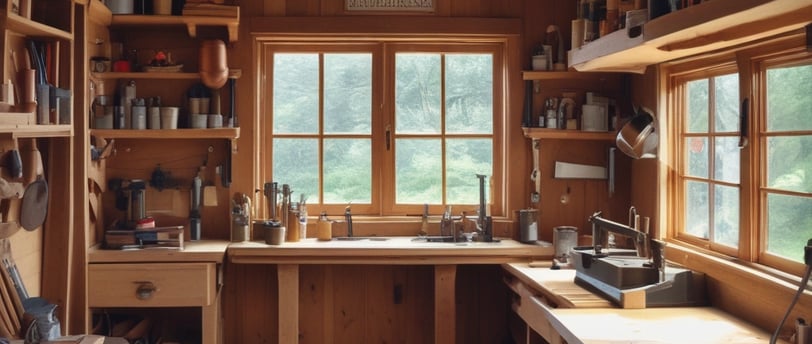Unlocking the Beauty of End Grains in Woodworking
5/21/20252 min read


What Are End Grains?
In the world of woodworking, the end grain refers to the surface of the wood that has been cut perpendicular to the grain direction. When you look at a piece of wood from the end, you see a unique pattern formed by the growth rings, which can vary significantly from one species to another. Many woodworkers appreciate end grains not only for their aesthetic appeal but also for their functional properties.
The Aesthetics of End Grains
One of the most compelling reasons to work with end grains is the striking visual effect they provide in finished pieces. The rich textures and detailed patterns are often showcased in items such as cutting boards, tabletops, and decorative accents. Each type of wood brings its own character, allowing artisans to create one-of-a-kind pieces that reflect their personal style. Whether you prefer the warm hues of oak or the bold contrasts of maple, end grains can truly elevate your woodworking project.
Functional Benefits of Using End Grains
Beyond their beauty, end grains hold several practical advantages. Wood cut from the end grain is known for its durability and resistance to wear, making it an ideal choice for high-traffic surfaces like kitchen countertops. Additionally, end grain surfaces are less prone to knife marks, which is a crucial consideration for cutting boards. The way the fibers are oriented in end grains allows them to absorb cuts: instead of tearing, the fibers compress and bounce back, making the surface last longer.
Woodworkers often prefer to use end grain for more than just aesthetics; the science behind its durability suggests that it could reduce the incidence of splits and cracks in your projects. This allows for long-lasting furniture and fixtures that stand the test of time, both in function and appearance.
How to Work with End Grains
When crafting with end grains, there are some specialized techniques to keep in mind. For starters, using sharp tools is essential to prevent tearing the wood fibers. Chisels and planes should be well-honed to achieve a smooth finish. Additionally, applying the right finish can enhance the natural beauty of the end grain. Many woodworkers opt for an oil finish to allow the wood to breathe and showcase its inherent patterns without creating a glossy sheen.
Furthermore, it’s worth considering the orientation of the wood in your designs. When creating items like cutting boards, alternating the grain direction can enhance both the aesthetic appeal and longevity of the piece. This technique not only provides a stunning visual but also a more resilient structure.
Conclusion
In summary, end grains present woodworkers with a wealth of opportunities to explore both visually and functionally. By understanding the unique characteristics and benefits of end grains, you can create stunning, resilient wood projects that are truly a testament to the beauty of nature. Whether you are a novice or a seasoned craftsman, embracing end grains can transform your woodworking experience.
